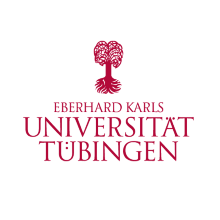Epigenetic changes are hallmarks for diseases
Epigenetic changes often play a role in pathological tissue changes. DNA methylations and histone modifications are dynamic regulators of proliferation and cell behavior and thus have an influence on tissue morphology in the pathogenesis, diagnostics, and prevention/therapy of various oncological diseases.
In comparison to healthy cells, tumor cells show an altered epigenetic profile. DNA methylations in malignant tumors are the best studied so far. Tumor cells often show so-called hypomethylations of gene promoter regions, which leads to an activation of the affected genes. The DNA methylation profile can be essential for the pathogenesis, diagnosis and therapy of the individual tumor disease. Novel therapeutic methods, which specifically modulate the dynamic epigenetic network of malignant cells, have great potential to be used in the differentiation of oncological tissue in the future.
New methods for the identification and analysis of cell-specific DNA methylation profiles would contribute to the understanding of the pathogenesis and diagnostics of oncological diseases and may support the development of new therapies. The problem here is that established methods for the investigation of epigenetic alterations have so far been very time-consuming and require the disruption of the tissue and the isolation of the cellular DNA.
Raman spectroscopy as a non-invasive method for measuring epigenetic changes
Raman spectroscopy is a non-invasive analytical technique that allows molecular changes to be studied at the single cell level. Laser light is used here to excite specific molecular vibrations, which allows the specific Raman scattering to be detected. Chemical and structural changes can thus be tracked in situ and in real time at high resolution (down to about 200 nm) using Raman spectroscopy. Our own preliminary work indicates the possibility of non-invasive and marker-free analysis of epigenetic changes, such as differentiation between methylated and unmethylated DNA regions. To date, changes in nucleic acid structures have not been investigated in situ in cell cultures or tissues using Raman microspectroscopy.
Current status
Currently, an endometriosis project is being worked on in cooperation with project C2. The aim is to investigate differences and similarities between glands of the healthy endometrium with glands of endometriosis patients on a molecular level using Raman spectroscopy. Based on the Raman data between healthy and diseased tissue, a classification model is to be created which could be used intraoperatively for tissue recognition.

Aleksandra Mariyanats
PhD Student A3
[Image: Aleksandra Mariyanats]

Katja Schenke-Layland
Prof. Dr.Principle Investigator of Subproject A3
[Image: Katja Schenke-Layland, University of Tuebingen]

Julia Marzi
Dr.Supervisor of Subproject A3
[Image: Julia Marzi]





